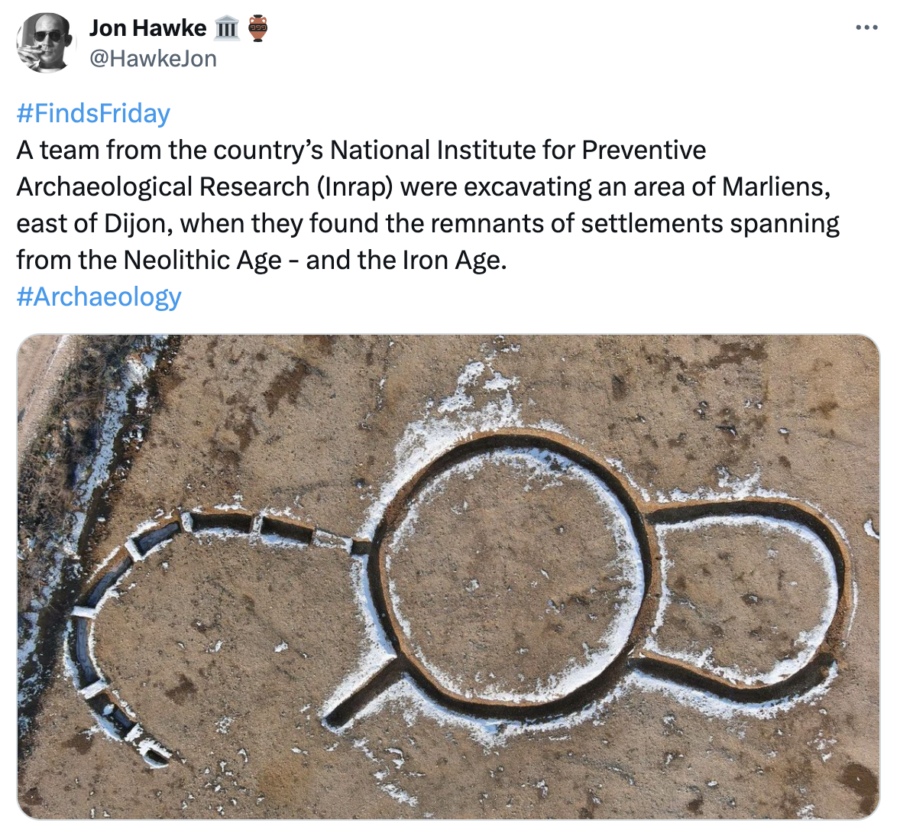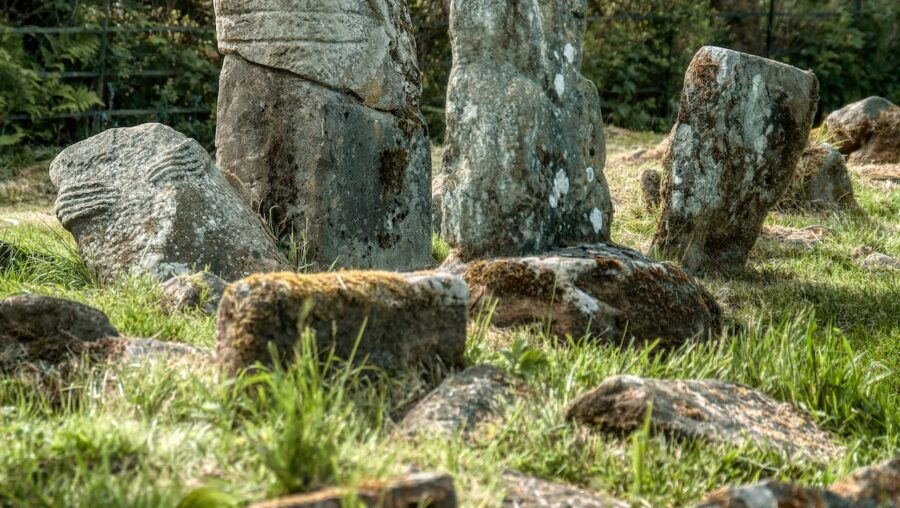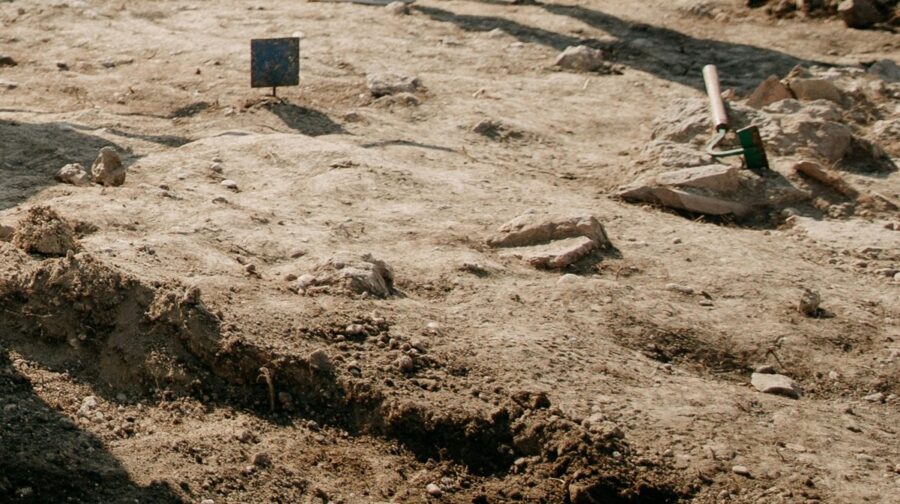Ancient Monument Unearthed Shocks Archeologists, Unlike Anything Ever Seen

An archaeological dig site in France has uncovered several artifacts and the remnants of a mysterious ancient monument. The structure has left experts perplexed, unable to figure out its function. Tests are being done on samples from the site and the nearby artifacts as archaeologists try to unravel the mysteries of the site.
An Ancient Find

The dig site is in Marliens, east of the city of Dijon. The archaeologists who discovered the ancient monument are part of the Institute for Preventive Archeological Research or INRAP. The experts at INRAP have called the monument “unprecedented” with no known structures they can compare it to.
The ancient monument is a circular structure, 36 feet in diameter, with two oblong attached segments. One of those sections is a 26-foot-long enclosure shaped like a horseshoe. On the other side are the remains of a large fenced area, with a layer of gravel indicating where the fence once stood.
From The Neolithic Era

Experts believe the ancient monument dates back to the Neolithic era, around 10,000 BC, though aging hasn’t been done yet making a precise date impossible.
The estimated era is based on cut flint artifacts found on the site that are consistent with other artifacts from the Neolithic era. The site is being aged with radiocarbon analyses, which will help researchers to figure out when the monument was built.
Maybe From The Iron Age

While the ancient monument is the most intriguing discovery because of its unique nature, multiple other discoveries were made nearby. The dig site covered a large area, nearly 200,000 square feet.
The cut flint around the mysterious structure may date back to the Neolithic era but other artifacts found in the area are believed to have come from as recently as the Iron Age, which ended around 550 BC.
Other Interesting Finds

One cache of artifacts discovered near the ancient monument included arrowheads, leather arm guards, a flint lighter, and a copper dagger.
Experts believe these objects were buried as part of a funeral rite with a long decomposed corpse.
The dagger is of particular interest as tests can be done to indicate where the copper it was made of came from, which will help uncover ancient trade routes.
Possible Findings From The Bronze Age

Other locations were also uncovered with much clearer functions than the ancient monument.
Multiple Bronze Age wells were uncovered dating back to around 3,000 BC. An Iron Age cemetery was also discovered, with six funeral urns being uncovered.
The cemetery is another valuable source of information for INRAP experts. The urns contained partially cremated bones, along with rings and bracelets made of copper and iron.
The bones are being tested to learn more about the cremation process used at the time and Iron Age funeral practices.
Plenty For INRAP To Test And Analyze

The whole dig site has given INRAP researchers plenty to test and analyze, but the ancient monument remains the most interesting discovery.
While the artifacts and remains discovered can help provide details about ancient life, the structure is a true mystery. Uncovering how and why the monument was built could be revolutionary within the field of archeology, completely changing what we know about the people of ancient France.
Source: indy100











